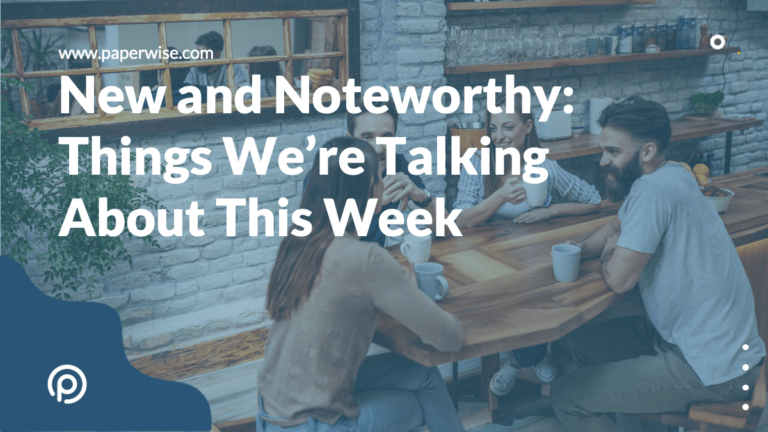The Great Resignation is real and trends show it will only increase as more Generation Z employees enter the workforce. Up to 77% of Gen Z workers are thinking about quitting right now. Remote working has made it easier for workers to take higher paying positions without relocation and younger workers consistently report that meaning and purpose in work is more important to them than stability or prestige. You can no longer rely on traditional retention efforts or even inertia to keep your employees, you need to change how you approach the actual work in your company.
Unfortunately, for most companies, even a single resignation of a key employee can have deep impacts on other employees, on customers and on overall efficiency. Work has to be picked up by others as you hire and train a new employee. Any time an employee leaves, you have a long list of tasks you need to complete to maintain security and reduce risk. Customer service is impacted if there isn’t a standard for tracking and following up on important tasks, information, documents, and processes.
If you’re concerned about The Great Resignation and its impact on your company, there are two strategies you need to implement immediately:
- Improve the value of the work your employees do.
- Prepare for the inevitability of increased employee onboarding and offboarding.
Improve The Value of The Work Your Employees Do
It would be easy to dismiss The Great Resignation as simply workers seeking higher paying jobs. But a recent study from Adobe of 5,500 workers found that 53% of employees would leave their job to pursue a more meaningful position or a position they are passionate about. This is as much or more about job fulfillment as it is salary. They also found that repetitive and tedious tasks were among the top reasons stated for leaving a company.
Every job has a complex combination of frustrating and satisfying tasks. With Paperwise Symphony, you can reduce the frustrations so your employees spend more time on rewarding work. Adobe found that many workers are spending time on meaningless and mind-numbing activities. Here are the areas employees spend time on that could be replaced with automation:
- 72% of workers waste time searching for, sharing, and accessing files.
- 56% spend time filling out forms, time sheets and expense reports.
- 44% are delayed while waiting for approvals and signatures.
- 32% spent time on manual processes related to making payments and invoicing.
- 43% dedicated time to collaborating on documents.
All these tasks could be reduced, eliminated, and made more efficient with workflow automation. Younger workers embrace automation because if makes their jobs more fulfilling in many ways.
- Reducing meaningless work. No workers enjoys redundant, manual, and repetitive tasks. Burnout is high in any job that requires mundane work. Paperwise reduces the need for manual and administrative tasks to help keep your employees engaged and feel less overwhelmed.
- Spending more time on fulfilling work. When employees free up time in the areas mentioned above – dealing with documents, approvals and admin work – they have more time to fully embrace the parts of their job that are the most meaningful to them. They’ll be able to use their minds for creative problem solving and innovation, better customer service and other areas that advance both their own careers and your business goals.
- Making work more flexible. With workflow automation, more of your employees can perform their work from anywhere or anytime. You know they will stay on task and you can measure performance using custom dashboards and workflow queues rather than leaning over a cubicle wall.
Prepare For the Inevitability of Increased Employee Onboarding and Offboarding.
While the most important strategy you can implement immediately is workflow automation to improve the lives of your current employees, you must also put automation in place to help respond to the increased workload of hiring more new employees and offboarding resigning workers.
- Hiring Processes: Most companies face many manual and paper-based processes in their hiring cycle. There are also many different steps during the recruiting and interviewing process that can get lost along the way across multiple departments. Can your HR processes scale up when they need to should you find yourself in an employee shortage? Paperwise user The Rawson Group estimates they’ve eliminated 20+ hours per week of new hire onboarding work, provided employees with a new portal, streamlined maintenance requests and reduced manual invoice matching by 90%. You can learn more about their approach in this case study.
- Offboarding Processes: When an employee resigns, can you be certain that your team is fulfilling every process and covering every detail? Employee offboarding is about risk management — security access must be revoked, badges and keys returned, forms filled out, exit interviews conducted, benefits transitioned, equipment tracked, and more. This can be time consuming and subject to errors. Paperwise makes sure you follow the right procedures in a timely fashion while saving hours of time for your HR staff.
If you’d like to learn more about how easy it can be to improve the work life of your employees and create new efficiencies for your HR team when they need it most, please contact us for a private consultation and we can get you started right away.


